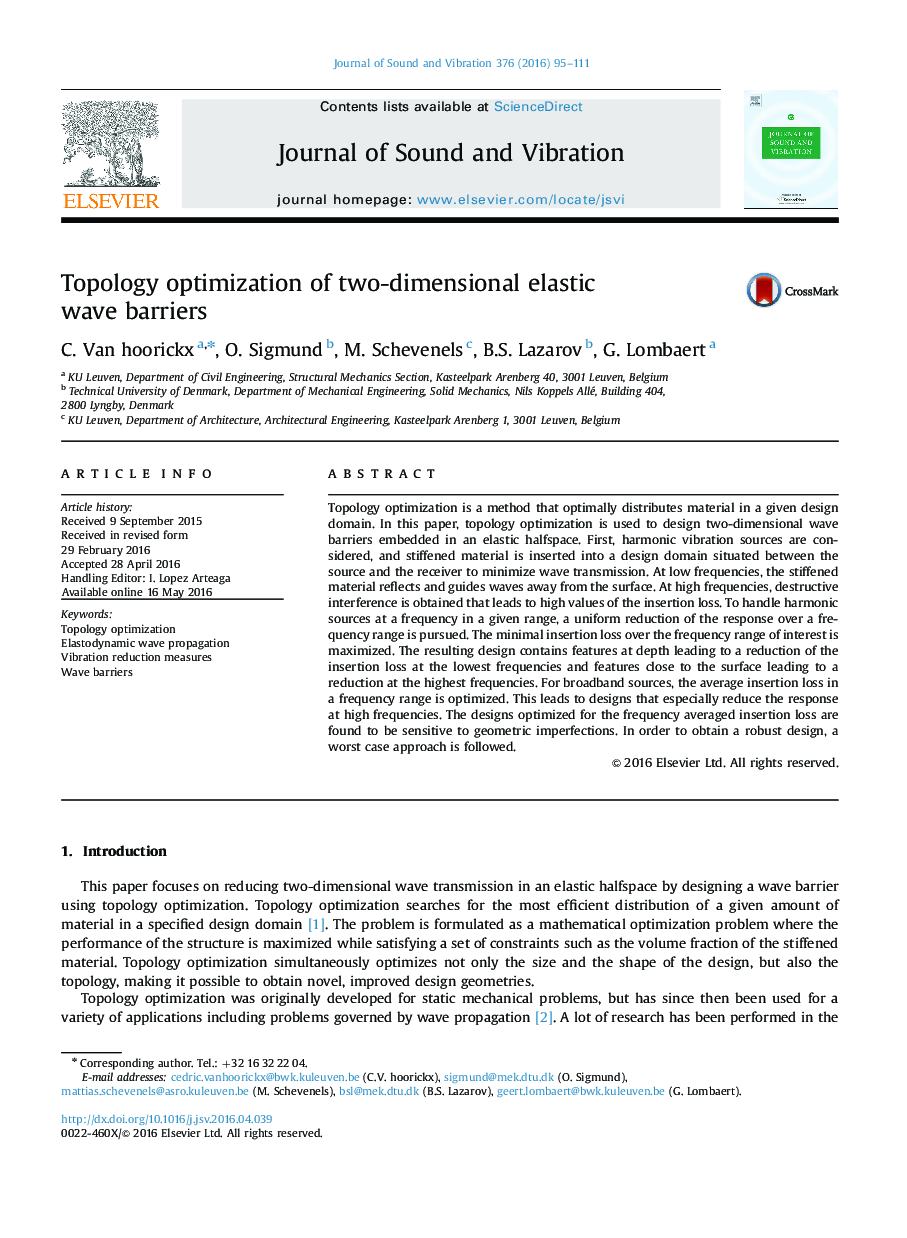| Article ID | Journal | Published Year | Pages | File Type |
|---|---|---|---|---|
| 6754511 | Journal of Sound and Vibration | 2016 | 17 Pages |
Abstract
Topology optimization is a method that optimally distributes material in a given design domain. In this paper, topology optimization is used to design two-dimensional wave barriers embedded in an elastic halfspace. First, harmonic vibration sources are considered, and stiffened material is inserted into a design domain situated between the source and the receiver to minimize wave transmission. At low frequencies, the stiffened material reflects and guides waves away from the surface. At high frequencies, destructive interference is obtained that leads to high values of the insertion loss. To handle harmonic sources at a frequency in a given range, a uniform reduction of the response over a frequency range is pursued. The minimal insertion loss over the frequency range of interest is maximized. The resulting design contains features at depth leading to a reduction of the insertion loss at the lowest frequencies and features close to the surface leading to a reduction at the highest frequencies. For broadband sources, the average insertion loss in a frequency range is optimized. This leads to designs that especially reduce the response at high frequencies. The designs optimized for the frequency averaged insertion loss are found to be sensitive to geometric imperfections. In order to obtain a robust design, a worst case approach is followed.
Keywords
Related Topics
Physical Sciences and Engineering
Engineering
Civil and Structural Engineering
Authors
C. Van hoorickx, O. Sigmund, M. Schevenels, B.S. Lazarov, G. Lombaert,
